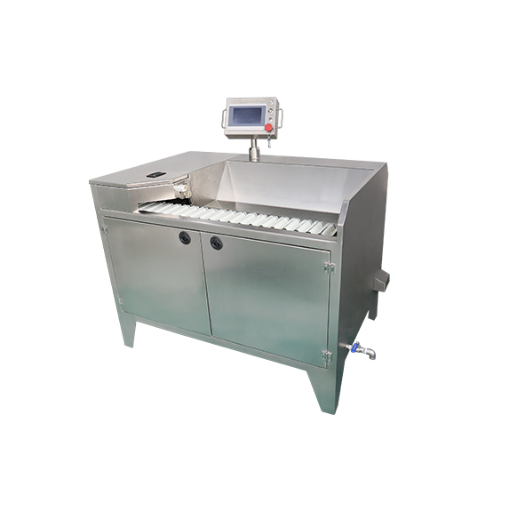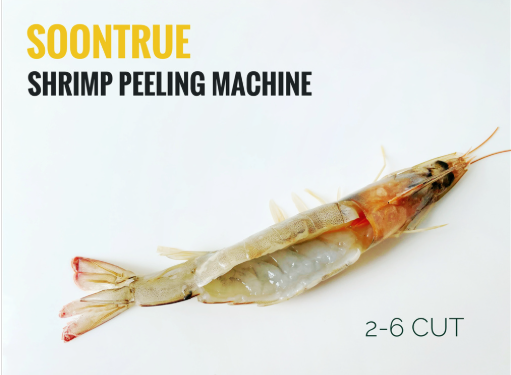A Comprehensive Guide for Shrimp Peeling Machine
Shrimp is one of the world’s most popular seafood products, prized for its delicate flavor and versatility in global cuisine. However, the process of peeling shrimp has long been a bottleneck for seafood processors and foodservice operators. Manual peeling is labor-intensive, inconsistent, and difficult to scale, especially as consumer demand for ready-to-cook and value-added shrimp products continues to rise. In response to these challenges, the shrimp peeling machine has emerged as a transformative solution, delivering automation, efficiency, and consistent product quality. This comprehensive guide will walk you through the working principles, key features, operational advantages, and practical considerations of shrimp peeling machines, with a special focus on why they are essential for modern seafood processing.
What Is a Shrimp Peeling Machine?
A shrimp peeling machine is an automated device engineered to efficiently remove the shell from shrimp, and in many cases, devein the product as well. These machines are designed to process both wild-caught and farmed shrimp, accommodating a variety of sizes and peeling styles to meet diverse market requirements. By automating the peeling process, these machines significantly reduce manual labor, enhance throughput, and ensure a uniform, high-quality end product.
How Does a Shrimp Peeling Machine Work?
The operation of a modern shrimp peeling machine involves several integrated steps, each designed to maximize efficiency and product integrity:
Raw Material Cleaning: Before peeling, shrimp are thoroughly cleaned to remove solid contaminants such as rocks, shells, sand, and other debris. This is typically achieved using gravity and adjustable water flow, which not only improves product quality but also reduces equipment wear.
Automatic Feeding and Conveying: Shrimp are automatically fed into the machine using a conveyor system. This ensures even distribution and keeps multiple peeling lines running at full capacity. Integrated weighing systems help eliminate under- or over-delivery of shrimp, minimizing product damage and optimizing throughput.
Peeling and Deveining: The core of the process involves advanced stripping technology that efficiently removes the shell while retaining the shrimp's natural texture, color, and quality. Some machines also feature integrated deveining systems that remove the digestive tract for a cleaner, more appealing product.
Separation and Purification: After peeling, the system separates the shrimp meat from the shells. This step is crucial for maintaining product integrity and ensuring that only high-quality meat advances to packaging or further processing.
Inspection and Optimization: Many modern machines include inspection belts equipped with vision technology, allowing for real-time grading and optimization. This reduces the need for manual inspection and ensures a consistently high standard of peeled shrimp.
Key Features of Shrimp Peeling Machines
Shrimp peeling machines are packed with features that make them indispensable for seafood processors:
High Efficiency and Capacity: These machines are capable of processing thousands of shrimp per hour, far surpassing the capabilities of manual labor. This makes them ideal for both large-scale processing plants and smaller operations looking to boost productivity.
Wide Range of Peeling Styles: From E-Z peel and tail-on to butterfly split and complete peel, modern machines can be configured to produce a variety of peeling styles to suit different consumer preferences and export requirements.
Flexibility for Different Shrimp Sizes: Advanced machines can handle a broad spectrum of shrimp sizes, typically ranging from 21/25 to 71/90 per pound, ensuring adaptability for various market needs.
Durable Construction: Built with corrosion-resistant materials and robust assembly parts, these machines are designed for longevity and reliable operation in demanding seafood processing environments.
User-Friendly Interface: Touchscreen controls and intuitive HMIs (Human-Machine Interfaces) allow operators to manage the entire system from a single location. This simplifies operation, reduces training time, and enhances overall productivity.
Quick Specification Changes: Thanks to servo drive systems and programmable settings, changing between different shrimp sizes or peeling styles can be accomplished quickly and easily, minimizing downtime and maximizing throughput.
Easy Maintenance and Cleaning: Machines are designed for straightforward cleaning and maintenance, with components that can be washed directly with water and independent electric box designs for added safety and convenience.
Remote Monitoring and Diagnostics: Some advanced models offer remote internet access, enabling real-time system monitoring, remote diagnostics, and software updates to further reduce downtime and support continuous improvement.
Advantages of Using a Shrimp Peeling Machine
The adoption of shrimp peeling machines brings a host of benefits to seafood processors and foodservice operators:
Labor Savings: Automation drastically reduces the need for manual labor, lowering operational costs and minimizing labor shortages, especially during peak production periods.
Consistent Product Quality: Machine processing ensures uniform peeling depth and style, resulting in a more attractive and marketable product. This consistency is difficult to achieve with manual labor alone.
Enhanced Food Safety: Automated systems minimize human contact with the product, reducing the risk of contamination and supporting higher hygiene standards.
Increased Yield and Reduced Waste: Advanced peeling technology is designed to maximize meat retention and minimize product loss, ensuring that more of the valuable shrimp meat makes it to market.
Scalability: Shrimp peeling machines can be integrated into larger processing lines or used as standalone units, making them suitable for operations of all sizes.
Adaptability: The ability to quickly switch between different shrimp sizes and peeling styles allows processors to respond rapidly to changing market demands and customer preferences.
Practical Considerations for Operation and Maintenance
To fully realize the benefits of a shrimp peeling machine, it is essential to follow best practices in operation and maintenance:
Operator Training: While modern machines are user-friendly, proper training ensures safe operation and maximizes productivity. Operators should be familiar with the machine's controls, maintenance routines, and troubleshooting procedures.
Routine Cleaning: Regular cleaning is crucial for maintaining hygiene and preventing buildup of shrimp residue, which can affect machine performance and product quality. Many machines are designed for easy cleaning, with water-washable components and accessible conveyor belts.
Scheduled Maintenance: Routine inspection and maintenance of moving parts, clamps, and blades help prevent unexpected breakdowns and extend the machine's lifespan.
Remote Support: For machines equipped with remote monitoring, take advantage of remote diagnostics and software updates to minimize downtime and keep the system running at peak efficiency.
Customization and Integration: Work with your equipment supplier to customize the machine for your specific production needs and integrate it seamlessly into your existing processing line.
Why Choose Soontrue's Shrimp Peeling Machine?
If you are seeking a reliable, high-efficiency solution for shrimp processing, Soontrue's shrimp peeling machine stands out as the industry benchmark. With decades of experience in automated food processing equipment, Soontrue combines advanced technology, robust engineering, and user-centric design to deliver exceptional results for seafood processors worldwide.
Soontrue's shrimp peeling machines are built with high-quality, corrosion-resistant materials, ensuring durability and hygiene even in the most demanding environments. The machines feature a compact footprint, making them easy to integrate into both new and existing production lines. With servo-driven technology and an intuitive touchscreen interface, operators can quickly adjust settings to accommodate different shrimp sizes and peeling styles, all while maintaining consistent output and product quality.
The IP65 waterproof design guarantees reliable operation in high-moisture environments, and the modular platform allows for seamless expansion as your business grows. Soontrue's machines are engineered for easy maintenance, with components that can be washed directly with water and an independent electric box for added safety. Remote monitoring and diagnostics further enhance uptime and operational efficiency, while the ability to process a wide range of shrimp sizes and styles ensures you are always ready to meet market demands.
By choosing Soontrue, you gain not only a cutting-edge shrimp peeling machine but also the support of a dedicated team of engineers and technicians committed to your success. Whether you operate a large-scale processing plant or a smaller seafood business, Soontrue delivers the performance, flexibility, and reliability you need to stay ahead in a competitive market.
Conclusion
The shrimp peeling machine has become an indispensable tool for modern seafood processing, offering unparalleled efficiency, consistency, and food safety. By automating the peeling and deveining process, these machines help businesses overcome labor challenges, reduce costs, and deliver a superior product to consumers. With advanced features such as quick specification changes, user-friendly controls, and robust construction, shrimp peeling machines are designed to meet the evolving needs of the seafood industry. For processors seeking the best in technology, reliability, and support, Soontrue's shrimp peeling machine is the clear choice to elevate your operations and drive long-term growth.




